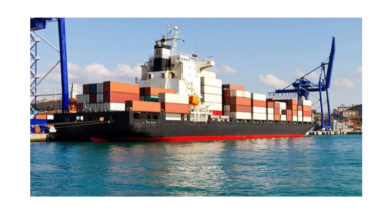How PSPs can seize the opportunity in tomorrow’s retail landscape
The world of retail has seen an enormous shift in the past two decades. Advances in technology, e-commerce and the expanding range of channels that retailers can use to reach their customers are increasing both competition and opportunity. Today’s consumers are more connected than ever. They are aware of the latest trends and the best deals. As a result, retailers have to stay on top of trends – and also understand what they mean for their businesses. And there is no bigger trend for modern retailers than the consumers’ path to purchase.
Often the first to respond to changing consumer behaviours, retail will continue to see steady growth – eMarketer predicts worldwide retail sales will reach $28,300 trillion in 2018.1 However, as competition increases, there is a need to rethink the strategy of the traditional store experience and look at new ways to innovate and interact to keep consumers’ attention and custom.
The future shopping experience has the potential to include all the best innovative thinking of today – from retailers predicting what household items customers will need and delivering them to their doorsteps automatically, to providing personalised shop windows showcasing targeted offers and products to capture attention on the High Street. We will also no doubt see robotic sales assistants and an increase of in-store 3D printers that will deliver customised products in real-time. Whatever the future holds, it includes large opportunities for print service providers (PSPs) to tap into this dynamic, fast-moving and lucrative market.
Although emerging digital channels continue to be big factors in the evolution of the consumers’ path to purchase it does not mean that print marketing is withering. Global research from Nielsen2 has found that shopper engagement with product and sales circulars – mailed or delivered print marketing, in-store materials, and newspaper ads – is significantly higher across all generations than digital and should remain so for the foreseeable future. Retailers therefore need to balance their marketing strategies across several channels rather than simply abandon one for the other.
According to PAC3 , 73% of major European retailers believe the physical branch will become increasingly important by 2020. In fact, in a multichannel world, physical stores can actually provide a competitive advantage4, particularly when aided by new technology trends such as beacons (small wireless sensors that connect the online with offline worlds). Stores have the opportunity to be the leading players in the multichannel shopping experience – and it is here that PSPs can add real value.
For example, localisation is set to play a far bigger role in the future. There has been a huge push in recent years to encourage consumers to ‘shop local’. This is likely to continue as a new breed of independent retailers and entrepreneurs providing tailored customer service, local knowledge and specialist goods will offer unique selling points that appeal to today’s increasingly conscious consumer. Furthermore, with customers valuing the kind of personal service that bigger brands can’t offer, enabling independent retailers to flourish in this new era of retail should be part of the forward-thinking PSP’s strategy.
But how does a retailer – particularly those that may be larger or part of a chain – achieve a ‘local’ feel when customers are in-store? The advances in digital print have a large role to play here. Ninety-five per cent of retailers already use posters for in-store communication5 and these are changed on average every 4.5 weeks6 with wide-ranging opportunities to use them to better effect. Localised POS campaigns for example, can involve the local community by referring to upcoming local events or integrating social buying habits by having ‘trend of the day’ posters taken from popular Instagram posts. Physical stores of one retailer can provide consumers with access to local producers, craftsmen and artists and even goods exchange systems through in-store Pop-Up shops, which in turn may attract a bigger footfall. As turnaround can be both fast and cost-effective, with short print runs increasingly seen as standard, it won’t be long before we begin to see more localised campaigns as part of the future of retail.
The shopping model and stores of the near future are poised to look radically different from just a decade ago, with the proliferation of technology providing customers with a personalised experience through the use of loyalty card and social media insights. Retailers have increased access to their shoppers’ information, including spending habits, location, and even how they feel while shopping. Stores that can combine these insights with print innovations such as attention-grabbing signage, 3D prototyping or personalised wallpaper will be those that will achieve greater loyalty and revenues.
Putting the customer first will remain the retailer’s mantra and print will continue to play a key role in aiding the personalised and localised shopping experience customers expect. But it will be the PSPs who embrace the opportunity that digital brings to print today that will be best placed to be the preferred strategic partners of the progressive retailers of tomorrow.
1 http://www.emarketer.com/Article/Retail-Sales-Worldwide-Will-Top-22-Trillion-This-Year/1011765
2 http://www.nielsen.com/us/en/insights/news/2014/todays-empowered-shopper-and-opportunities-to-reach-them.html
3 https://www.pac-online.com/omnichannel-retail-europe-strategies-challenges-measuring-success
4 http://www.mckinsey.com/industries/retail/our-insights/making-stores-matter-in-a-multichannel-world
5 Opportunity for Large format printers (UK), Euromonitor International, 2014
6 Opportunity for Large format printers (UK), Euromonitor International, 2014

.gif)



